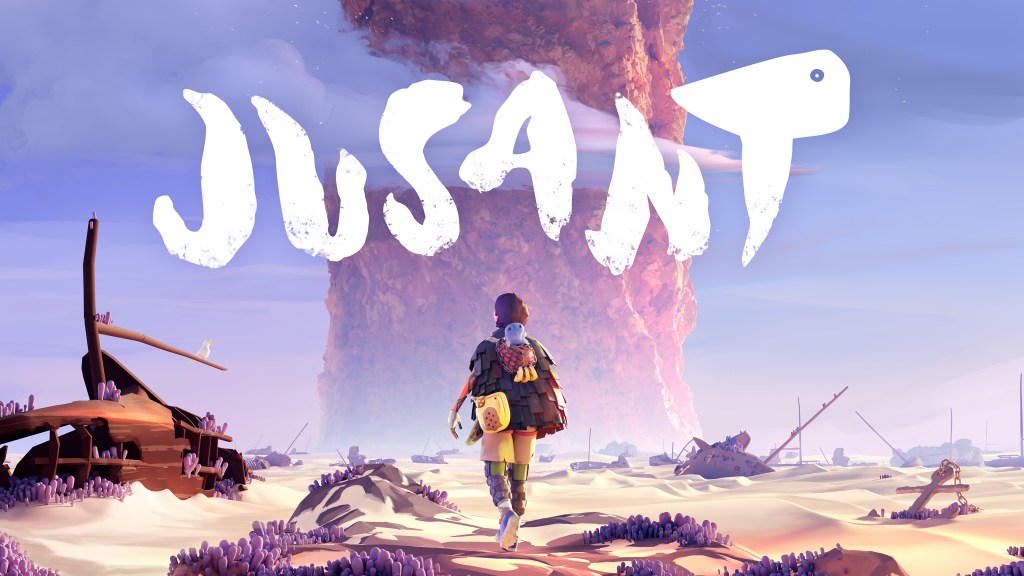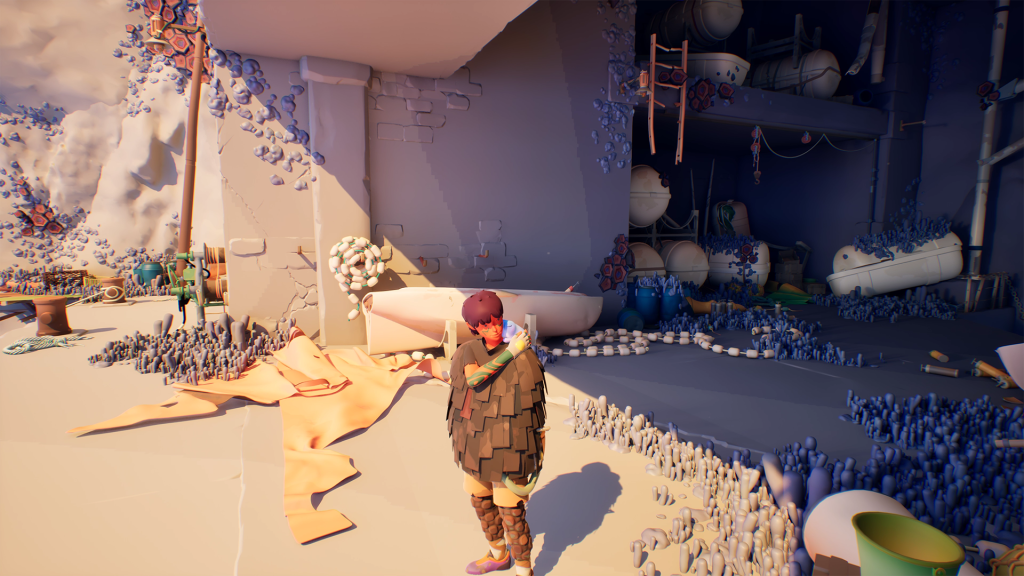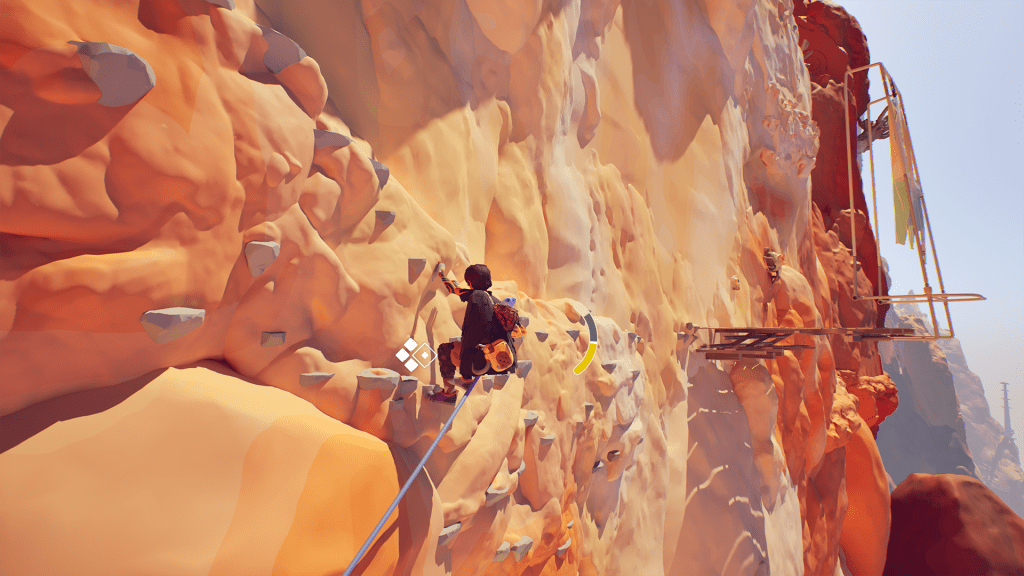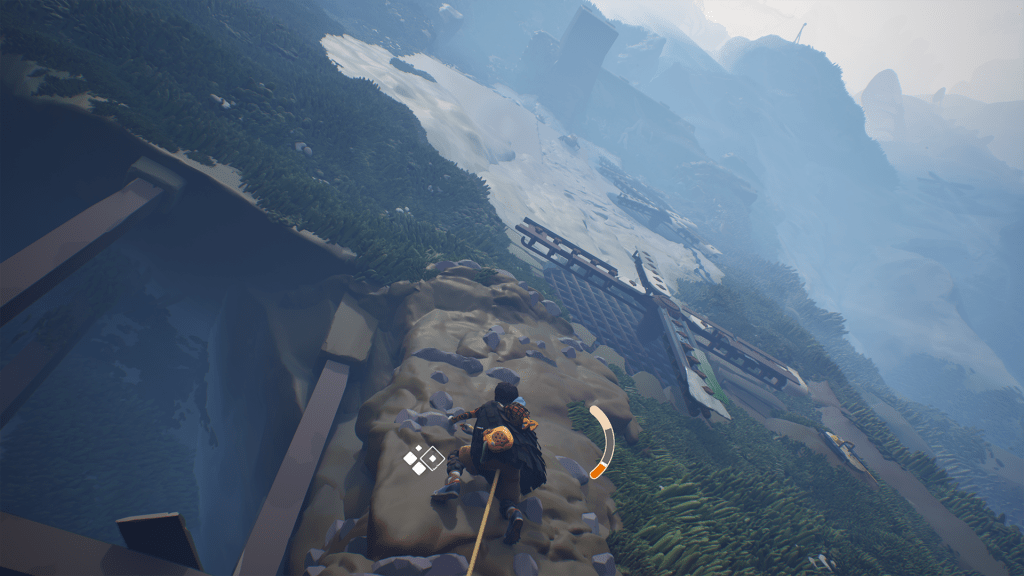Preview: Jusant

Jusant was a game that immediately and intensely caught my eye upon its announcement at the Xbox Games Showcase this year. The title’s visual style was undeniably a huge part of that initial eye catch, but its premise was what intrigued me most: traversing a towering monolith of stone and unearthing the stories of the people that used to be there.
It’s the same caliber of high concept that defines some of the more memorable games of what’s fast becoming gaming’s yesteryear—your Icos or your Journeys—and to that end, playing a portion of Jusant stoked a very similar feeling to those games the more time I put into it.
But I’m getting ahead of myself now. Arriving from the hands of the team at Don’t Nod, Jusant is currently slated for a release later this year on PC, PlayStation 5, and Xbox Series X|S. I had the chance to play through the game’s demo ahead of its wider release on August 28th, and while the experience wasn’t as perfectly meditative as I was hoping due a single snag, it offered a lot to get excited over.

After a brief intro cutscene highlighting the protagonist’s approach to the tower from the surrounding desert, the demo wasted no time in letting the player get hands-on with the controls. If this decision to beeline the player into controlling the character carries over into the full game, it’ll have been a smart one, as Jusant plays quite a bit differently from your average exploratory puzzle platformer.
While walking around on flat surfaces is executed via the analogue stick as you’d expect, climbing itself is carried out through the left and right triggers, with the depression of each one serving as the grabbing motion of the protagonist’s respective hand. The analogue stick still influences which direction you’re trying to move in, but the lion’s share of forward progress is carried out step by step, one grip at a time.
In many ways, this setup makes an intrinsic sense—climbing, rappelling, and spelunking is the name of the game, after all—but it definitely takes a bit of getting used to. For those initial steps at the start of the demo, I was surprised by just how slow my progression was as I scrounged for lore and took step by plodding step. As I started to improve my understanding of Jusant’s climbing and up the tempo of my exploration, however, it became exceedingly easy to appreciate the execution of this control method.
By being directly responsible for each grab of each foothold, it causes what would have been the simple, passive tilting of an analogue stick in another game to become a much more mindful activity. It more thoroughly grounds you to the game in a pretty natural way, which not only helps to foster a connection with the traversal of its world, but its protagonist as well, and that’s exactly the kind of feeling you hope for in a game of this style.

It doesn’t take long for the game to throw a few twists in the mix either, as momentum also plays a large part in your ascension from an early point. Extending the rope from your current anchor point in the wall and running back and forth to make a far jump is immensely satisfying when you’re able to pull it off, and the ability to place an anchor at almost any point makes the mechanics feel much more fluid and conducive to player freedom.
Given that the Jusant seems to be so heavily dependent on exploration in conjunction with its climbing mechanics, the experience needs offer high degree of variety when it comes to the locations you experience and story remnants you uncover. In my time with the demo, I found myself consistently getting caught up in the gorgeousness of the visuals as lengthy open ledges gave way to cramped alcoves and wider, open spaces alike. And I was always pleased to reach a higher location and discover the end of a path I could have taken earlier, but missed.
And on that particular note, the execution of Jusant’s visuals is a big part of its success. The aesthetic of the demo readily walked the line between a more abstract, stylized look and a high degree of visual fidelity all at once. Similarly, the snippets of music were sweeping and impactful when they cropped up, though I found myself wishing it was more of a consistent presence while climbing.
All of these elements feel as though they could pave the way for some great environmental storytelling in the long run, but I unfortunately can’t say the same for the demo’s more traditional narrative elements. The cutscenes were executed well enough (and the biggest source of the excellent music), but the readable text logs and notes left behind by the tower’s prior denizens did little to draw me in. Oftentimes they would feel rather superficial and overly long, with too little mystery or intrigue sprinkled in to up the engagement level.

Though Jusant’s demo only provided a glimpse at the contents of the game proper, I walked away from the experience impressed by its singular feel. There was a hearty dose of Don’t Nod’s signature style, but the inclusion of a more methodical traversal system made for a very deliberate pace to complement it. Pulling myself over the parapets of forgotten ruins and climbing crumbling watchtowers was always an engaging time as I looked over the vast landscape surrounding the monolith, and overcoming the more puzzling sections of the demo was always a great feeling.
Unfortunately, this same degree of positivity didn’t extend to the writings and logs left behind by the previous inhabitants of the tower, as mentioned above. This could very well change as more gets revealed in the full game, but it was a noticeable sore spot that I hadn’t quite expected from this demo.
Regardless, completing the demo cemented the notion that the game will be one to keep an eye on. Especially if you’re a fan of this particular style of game, Jusant is sure to make a strong impression when it releases later this year.
Preview beta access provided by Don’t Nod for PC. Screenshots provided by Don’t Nod.

You must be logged in to post a comment.